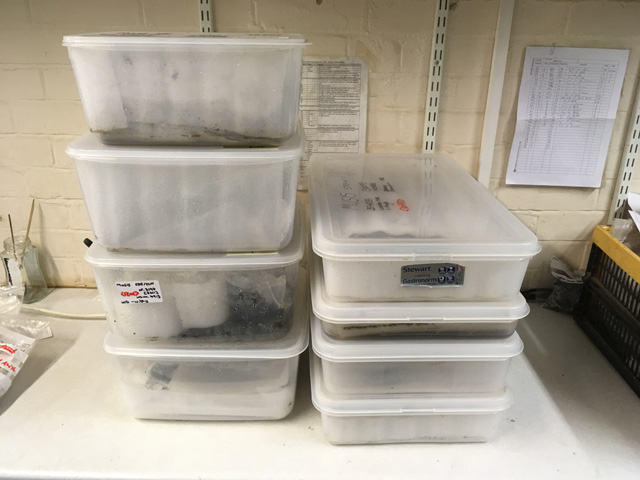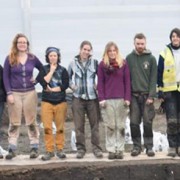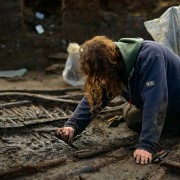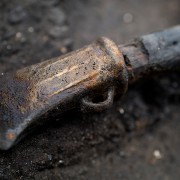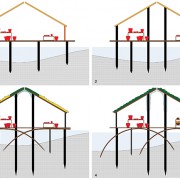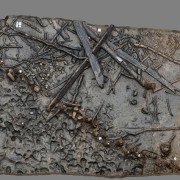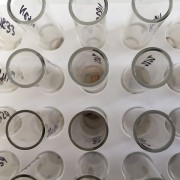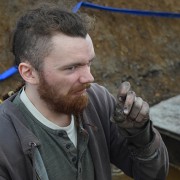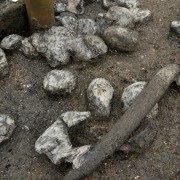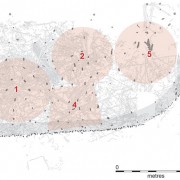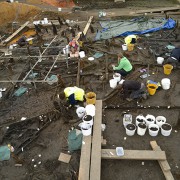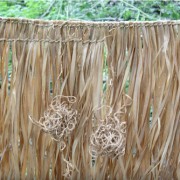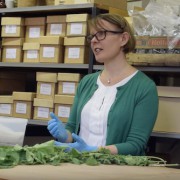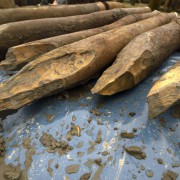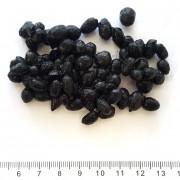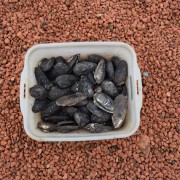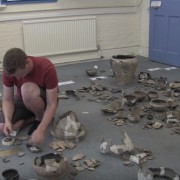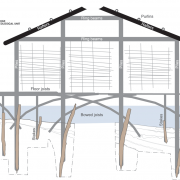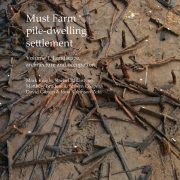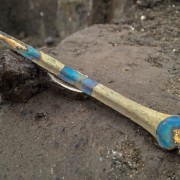Post-Ex Diary 2: What is Post-Excavation?
January 16, 2017
Beginning Our Post-Excavation
It has been a few months since we first posted an update about finishing the excavation of the Must Farm settlement. Since the end of September, the whole team has been extremely busy focusing on post-excavation work. Getting each aspect of this element of the project underway has been time-consuming but seeing analysis begin has been hugely satisfying.
Post-excavation work is an aspect of archaeology that is usually not discussed in much detail in public. Traditional perceptions of archaeology usually focus on just two elements of a project. Firstly, the excavation itself; images of muddy finds emerging from trenches tend to dominate coverage of the discipline. Secondly, media coverage then focuses on individuals wearing white cloth gloves carefully handling shiny artefacts while describing them in detail. This simplified presentation of archaeology misses the crucial step linking archaeological excavations with how we come to understand both their material and the sites themselves: the post-excavation process.
The absence of post-excavation in the general perception of archaeology is understandable; it lacks the immediacy and excitement of an excavation and the impact of seeing a fully conserved artefact. However, post-excavation is one of the most important aspects of any archaeological project and is an essential process in gaining an understanding of a site and the activities that took place there.
During our excavation at Must Farm, we were always keen to highlight the fact that an archaeological dig involves a constantly evolving understanding and interpretation of a site and its material. As we uncovered the late Bronze Age settlement, we were continually evaluating what we were looking at and developing theories relating to how the site was formed, how the structures were built, how the site was destroyed and many, many others. Often, our initial ideas were proved wrong or subtly changed as more material and evidence came to light. Excavation is a process, where we seek to get as close as possible to accurately understanding a site as it would have been in the past. This continuous refinement of our theories is not only true of the excavation itself but of post-excavation too.
Even though the physical digging may have finished months ago, in many ways post-excavation feels like a direct extension of the work on site. Through the material interpretation, scientific analysis, collation of all the recording and creation of highly detailed plans and drawings we are still adding to our knowledge of the archaeology. The biggest difference between excavation and post-excavation are the timescales involved. Discoveries on site tend to be immediate whereas in the labs and offices, results take time but offer a fantastic level of detail at several different scales.
What Does Must Farm’s Post-Excavation Involve?
Our post-excavation is highly varied, covering many different technologies, materials and techniques. Unlike when we were busy excavating on site, post-excavation is far more widespread with analysis of the material and information taking place all over the country, rather than focused in a single location. While this can be a little tricky it means we can take advantage of specialist expertise in a huge range of subjects and methodologies.
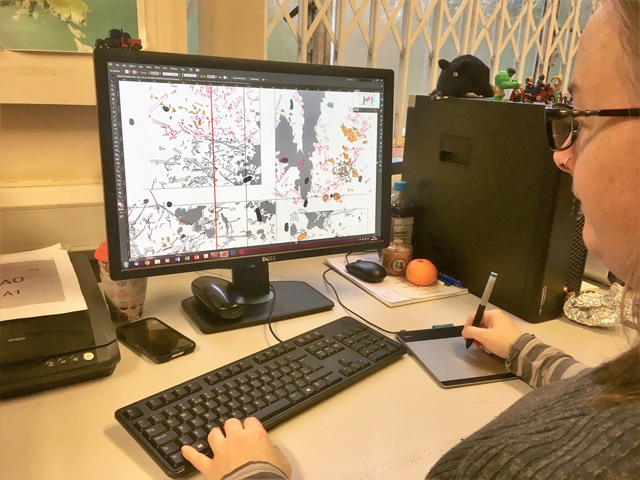
Digitising the site plan ready for creating new graphics highlighting different elements of the settlement.
Initial work has involved gathering together all our data recorded on site and placing them into more manageable formats. Spreadsheets are seldom exciting but are an essential basis for examining different artefact types, allowing key information such as quantities to be quickly and easily identified. With such large amounts of material from Must Farm, these searchable databases are indispensable for efficiently looking through artefacts.
Alongside digitising site archives and registers we have also been busy creating digital versions of plans and sections. Digital plans are a vital component of post-excavation as they facilitate the creation of a variety of graphics that can emphasise different elements of the site. For example, individual structures can be easily focused on, their interior contents highlighted or separated into material types. Using digital plans in this manner can allow patterns in distribution or development to be identified as well as acting as the basis for publication graphics and material.
We’ve also been doing further work utilising photogrammetry. Alongside acting as a basis for the plans of the excavation, the 3D models themselves are valuable tools at helping to understand and interpret the archaeology. Now that we are off-site we have been doing extra processing in preparation for future aspects of the post-excavation.
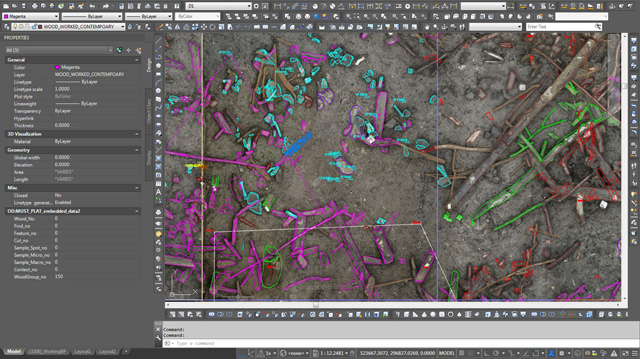
Screenshot showing the photogrammetry data being highlighted in CAD in order to number wood, finds and material.
Perhaps the largest area of post-excavation work is the involvement and expertise of a wide range of specialists. Analysis is being done across the entire site, ranging from artefacts and timbers to environmental data exploring the conditions at the settlement during its lifetime. There are over 20 specialists currently working on material unearthed during the excavation from across the UK. The scale of work ranges from examining microscopic algae to the examination of enormous oak timbers several metres in length.
Now that the analysis of artefacts, environmental data and the settlement has been underway for a few months, we are beginning to get preliminary results and findings back. Many of these discoveries are still at an early stage and will require further investigation to reach more definite results. However, we’re all very keen to start sharing the processes and techniques that we are employing and explain how these are informing our overall conclusions and understanding of the Must Farm settlement.
Over the coming weeks and months, we’ll be examining a selection of the post-excavation processes that we are currently carrying out and, where possible, will be sharing the initial results in a series of special diaries. With such a large assemblage of material to work with we’ll be doing our best to share as wide a range of different artefacts types and environmental analysis as possible. We are hoping to provide more insight into the archaeological post-excavation process and highlight how important it is in forming a more complete understanding of a site.
Related stories
Post Ex-Diary 22: Working Towards Publication
May 11, 2020
Post Ex-Diary 21: The Importance of Visualisation – Photography Part Two
February 17, 2020
Post-Ex Diary 19: The Importance of Visualisation – Illustration
December 9, 2019
Post-Ex Diary 18: The Importance of Visualisation – Photogrammetry
November 11, 2019
Post-Ex Diary 17: Stable Isotope Analyses and Must Farm
October 7, 2019
Post Ex-Diary 16: Parasites and Lifestyles at Must Farm
September 3, 2019
Post Ex-Diary 15: Exploring Structure 4 Part Two
August 5, 2019
Post Ex-Diary 14: Exploring Structure 4 Part One
July 15, 2019
Post-Ex Diary 13: The Must Farm Pile-Dwelling Settlement Open Access Antiquity Article
June 12, 2019
Post-Ex Diary 11: The Must Farm Textiles Part One
April 1, 2019
Post-Ex Diary 10: Specialist Analyses Part Three
March 4, 2019
Post-Ex Diary 9: Specialist Analyses Part Two
February 4, 2019
Post-Ex Diary 8: Specialist Analyses Part One
January 7, 2019
Post-Ex Diary 7: The Must Farm Pottery Refit
November 5, 2018
Learn more
About
The Must Farm pile-dwelling settlement was excavated by the Cambridge Archaeological Unit with funding from Historic England and Forterra.Publications
Read the Open Access publications the Must Farm pile-dwelling settlement: Volume 1. Landscape, architecture and occupation and Volume 2. Specialist reports.Dig Diaries
The excavation of the Must Farm settlement was carried out between August 2015 and August 2016. Take a look at our diary entries documenting the excavation process. ...read more
Discoveries
See some of the discoveries from the Must Farm pile-dwelling settlement.
Making Must Farm
Find out about our work with AncientCraft recreating Must Farm’s material.
FAQs
Further information on the Must Farm project.

